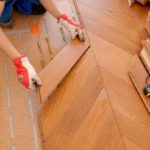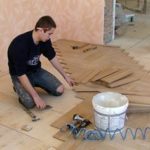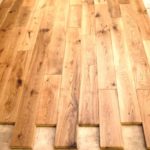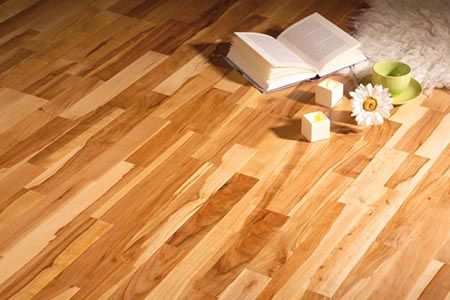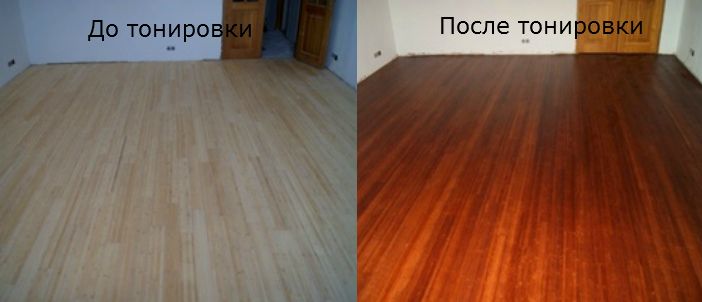Laying parquet on a screed without plywood
 Parquet board is a natural, practical and beautiful flooring option. An important step is not only the selection of the product, but also its installation. There are various ways to install parquet flooring indoors. Sometimes plywood is used for installation. You need to figure out why it is needed, whether it is possible not to use it when laying parquet on a screed, and how to carry out the whole process correctly.
Parquet board is a natural, practical and beautiful flooring option. An important step is not only the selection of the product, but also its installation. There are various ways to install parquet flooring indoors. Sometimes plywood is used for installation. You need to figure out why it is needed, whether it is possible not to use it when laying parquet on a screed, and how to carry out the whole process correctly.
The content of the article
Why do you need plywood?
Plywood is used not only for parquet, but also for other flooring, including tile and linoleum. It allows you to achieve a perfectly flat surface. This has a positive effect on the further use of the floor and its service life. In addition, parquet is highly sensitive to temperature changes. Plywood acts as a dry substrate and prevents the product from deforming.
Reference! Before installation, it is recommended to assess the humidity level in the room. To do this, use a special device. This will allow you to assess the condition of the room and the need to use additional substrate.
How to lay parquet without plywood
The base of the floor requires careful preparation, especially if additional plywood is not planned. The screed must meet important requirements:
- The permissible front height varies in the range of 1-3 mm per linear meter. To determine this parameter, use a special level;
- Humidity should not exceed 3%.
Any unevenness or cracks should be removed. If the humidity is high, it is recommended to place a vapor barrier film on the floor. The concrete base needs sanding and priming. This will give the foundation reliability. Using a concrete screed is the most popular base.
REFERENCE! For installation, you can use the adhesive and floating method. It is recommended to understand each of them.
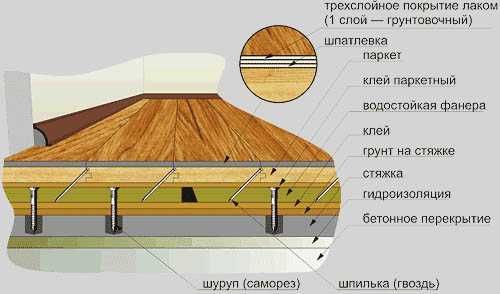 With the adhesive method, the product is attached to the base using an adhesive composition. Elastic glue is more suitable. The process consists of the following steps:
With the adhesive method, the product is attached to the base using an adhesive composition. Elastic glue is more suitable. The process consists of the following steps:
- The surface is treated with a primer;
- Take the boards for the first two rows and place them where they are supposed to lie. Glue is applied to the product and base;
- The first board is laid on the base, retreating from the wall by 10-12 mm;
- Using a special block, you should tack the second board to the previous one. It is necessary to glue each product for a maximum of 10 minutes, otherwise the glue will have time to dry;
- If necessary, the last board is trimmed and the next row begins with this remainder;
- For convenience, it is recommended to insert small wedges into the space between the floor and the wall;
- The described algorithm should be performed several times side by side. Then it is recommended to check their quality. There should be no cracks, the surface should be smooth.
When the floor is completely covered, the resulting seams are treated with an acrylic-based sealant.
The floating method is characterized by the absence of seams. This effect is achieved by compressing the parquet board. To do this, use the lock method or glue. Unlike the previous method, the product is glued not to the base, but to each other. The installation looks like this:
- Laying starts from the left corner. The board should be placed with the lock facing the wall.The side adjacent to the wall should be without grooves. It is recommended to cut them off;
- The second product is placed at an angle on the edge of the previous board;
- As in the previous case, the next row begins with the remnants of the product from the previous one. If the board is less than 30 cm in length, then it is better to take a new one and saw off half of it;
- It is necessary to continue in the same order until the end of the work.
To hold the product more firmly, it is recommended to use a rubber or wooden hammer. The floating technique is more suitable for small rooms. If the room is large, the floor will begin to creak and there is a high probability of curvature.
Finally, the surface should be sanded. If there are cracks, they must be puttied. When everything is dry, sand the floor again. The final stage is primer treatment and varnishing of the surface. This will protect the floor from damage and cracks and make it more beautiful.
What are the consequences of not having plywood?
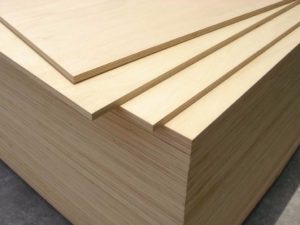 It was noted that the use of plywood is not mandatory when laying parquet boards. However, it is worth noting what negative aspects may arise if you abandon plywood. Its absence is fraught with:
It was noted that the use of plywood is not mandatory when laying parquet boards. However, it is worth noting what negative aspects may arise if you abandon plywood. Its absence is fraught with:
- Curvature of the floor. If the base is not level enough, then over time the board will simply bend and the aesthetic appearance of the room will be immediately compromised;
- No additional thermal insulation. Plywood can be an additional source of heat conservation. Otherwise, the floor will be very cold.
Plywood is also an excellent base for securely gluing boards together. Therefore, it allows you to create a strong connection that will last for a long time.If you do not plan to use it, you must take into account many factors, including the evenness of the base and the level of humidity, in order to lay the parquet efficiently and correctly.

